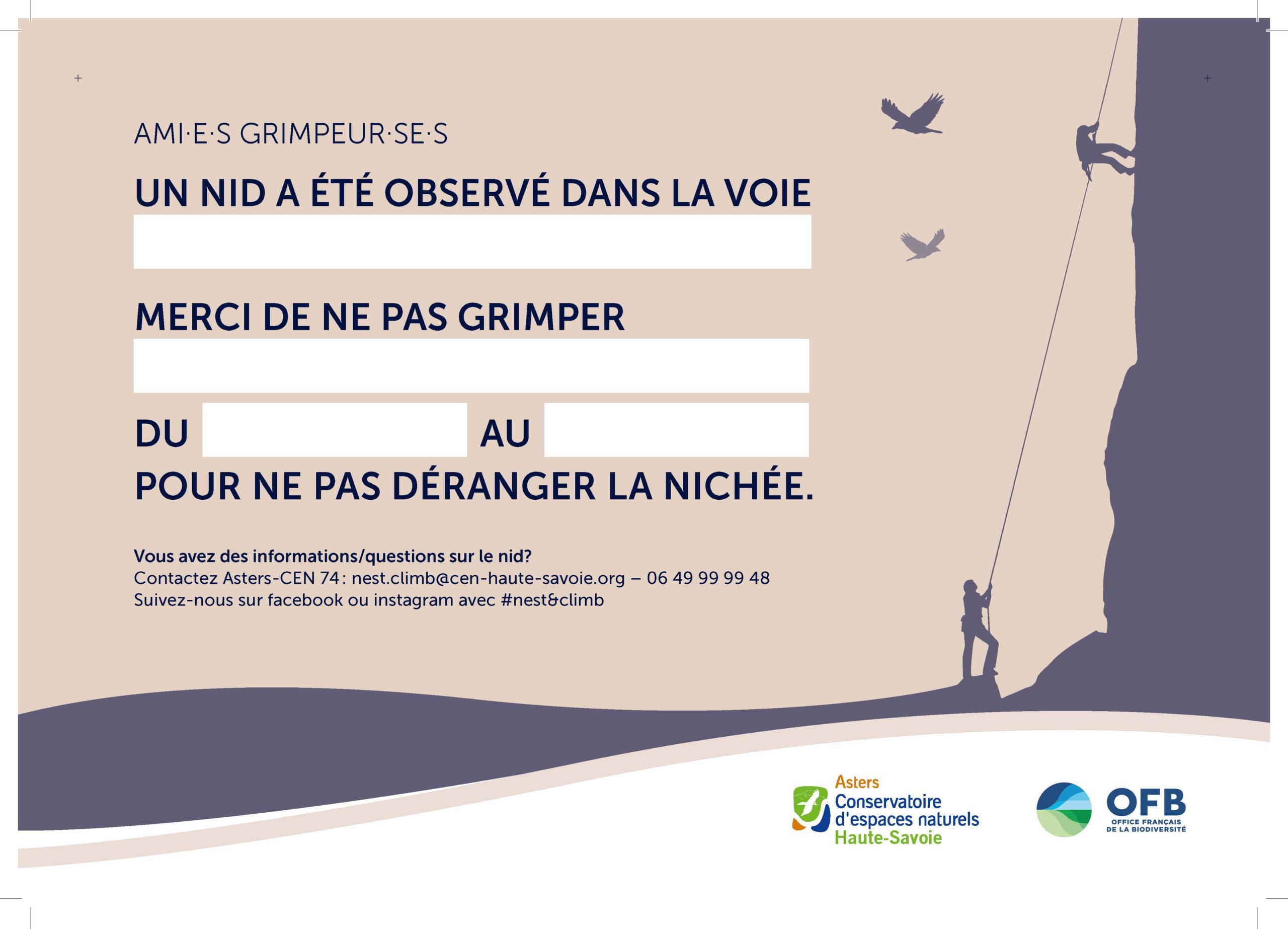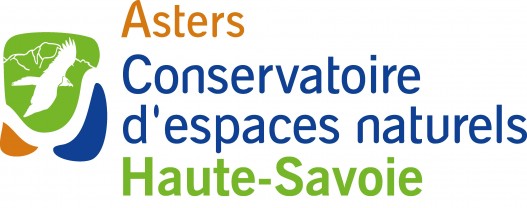Case Study
Nest&Climb: a participatory monitoring of birds’ nests in climbing areas
Contact name
Christelle Bakhache
Institution name
Asters - Conservatoire d'Espaces Naturels de Haute -Savoie
Region & country
France - Haute Savoie
Summary
Nest&Climb is a project developed in the Haute-Savoie département and funded by the French Biodiversity Office (OFB) that aims at education and raising climbers’ awareness on bird species they share the crags with. We ask climbers to warn us if they see or suspect a bird’s nest in the cliff where they climb, we then identify the bird and warn other users of the area about it by putting a sign explaining the nesting period and the routes that should not be climbed during that period of time.

sign to be put at the foot of the routes that host a nest
design by Benoit Favre
Background of the project
Previously in Haute-Savoie there was only limited knowledge and monitoring of main species of rupestrian birds (royal eagles, bearded vultures) and ban of these areas. Nest&Climb has extended the knowledge including smaller birds and a diversity of species, and making it obvious that climbers share the natural space with wild fauna. It has made the bans more acceptable by making sure the nests are actually occupied before banning the routes for only a short period of time.
Climbers had been asking about what to do when they find a nest or a young bird. There was a need for information, education on good practices and protection of rupestrian birds as climbing develops and new crags are bolted every year. There was also a need to take over the environmental monitoring of crags as the climbing federation evolved radically throughout the years as getting less and less committed in the management of outdoor areas.
Solution and actions taken
We addressed those needs by creating coherent, accessible information online and on site, making climbers’ actors and targets of messages regarding bird species on local crags.
We build Facebook and Instagram pages giving information about birds that nest in cliffs. Then we used those pages to pass on information about the nests that were reported by climbers, creating a community of several hundreds climbers interested in tackling that issue. We also put signs on site to inform the local climbers that would show up at the crag about the nest and the routes that were to be avoided. We developed educational content about the different bird species and nesting periods.
Other institutions or parties involved
We involved mostly climbers that were reporting nests on the cliffs (there are more than 150 bolted cliffs in Haute-Savoie). For some nests, we turned to the local authority managing the site : “Compagnie des guide”, Natura 2000 managers, local municipalities…, that in the future could be reporting about the occupation of the nest and put up the signs themselves.
Results
We are still strengthening the community and preparing the next nesting season by keeping climbers informed and updated. We are also trying to perpetuate this project after the 2 years of funding so that information is kept updated and we can answer reports on nests that will keep coming from a greater number of climbers.
Challenges
We had a lot of ground to cover with more than 20 nests being reported in as many crags. It was delicate to identify the birds without disturbing them. Accessing the places to put the signs could be a challenge (first bolts are sometimes high). Initially we were afraid that the climbers would welcome the project negatively because it could have been perceived as a threat to their freedom, but it turned out to be received very positively.
Lessons learned
Outdoor enthusiasts are eager to learn about the surrounding environment of their sport practices and would do the right thing if they know why it has to be done.
Contact name
Christelle Bakhache
Institution name
Asters - Conservatoire d'Espaces Naturels de Haute -Savoie
Website(s)
